The Most Iconic and Unforgettable Fashion Week Collections
They stirred conversation, shook up norms, and, in some cases, rewrote the entire fashion playbook.


Fashion and its musical chairs of Creative Directors have always been about more than just clothes. They've also been a vehicle for cultivating memorable moments—from Met Gala red carpets to the Fashion Month calendar. Designers have long used runway collections and show productions to redefine what's possible by blending artistic expression, craftsmanship, and cultural and political statements.
The iconic runway moments that result are milestones—each stirring conversation, shaking up norms, and, in some cases, rewriting the entire fashion playbook. Here, we have 32 snapshots in fashion history that challenged our perceptions, took us by surprise, and even changed the game forever.
Alexander McQueen's "Voss," Spring/Summer (2001)
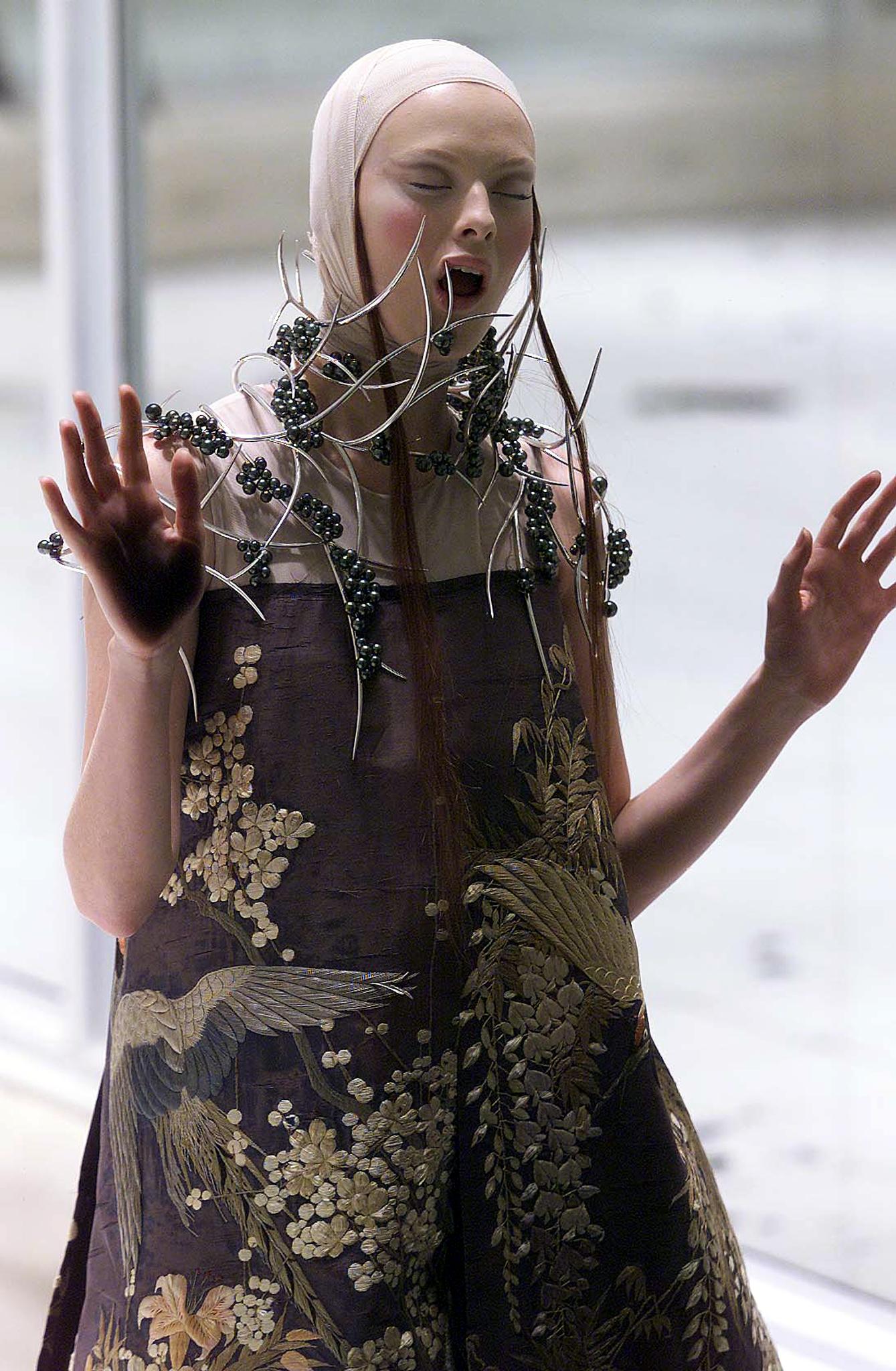
McQueen’s Spring/Summer 2001 collection, “Voss,” shocked and captivated the fashion world by being daring, innovative, and political. The show featured a mirrored box where a model was being removed from her clothes to symbolize and deconstruct what makes something beautiful and if it's worth losing your sanity over. A treatise on the pressures one must endure from society, McQueen deliberately began his show an hour late to force the audiences to look at themselves in the mirror and feel uncomfortable. "Voss" included dresses made with razor clam shells and microscope slides. Overall, the show responded to McQueen's difficulties with the fashion industry status quo.
Yves Saint Laurent’s Le Smoking (1967)

It's hard to imagine now, but in 1967, Yves Saint Laurent turned the fashion world upside down with his "Le Smoking" design—a tuxedo suit designed for women. The androgynous, tailored look of the suit opened doors for women's fashion, giving them an alternative to dresses. "Le Smoking" led the pantsuit revolution, allowing women to revel in the empowerment of dressing like assertive men. It may seem simple to us, but "Le Smoking" is one of the most critical designs of the 20th century, still influencing collections today.
Christian Dior’s “New Look” (1947)

At 30 years old and just three months after founding his namesake brand, Christian Dior would change women's fashion forever with his "New Look." With its rounded shoulders, tiny waistlines, and voluminous skirts, the collection was a striking contrast to the banal beige and sleek lines of the years that pre-dated it. Carmel Snow, editor in chief of Harper’s Bazaar, coined the name "New Look" when she rushed backstage to congratulate Monsieur Dior on his debut show: “It’s quite a revolution, dear Christian! Your dresses have such a new look."
Louis Vuitton x Supreme, Menswear Fall/Winter (2017)

In late 2017, Louis Vuitton and Supreme collaborated for one of the most talked-about collections in fashion history. The duo was completely unexpected but a welcome surprise: Blending high fashion with streetwear trends, the pieces created a buzz from uptown to downtown. From luxe monogrammed hoodies to flashy bags, the collaboration was a defining moment in fashion’s ever-growing crossover between luxury and street style, marking a bold shift in how fashion and culture intersect.
Prada Menswear Fall/Winter (2012)

Prada's Menswear Fall 2012 collection focused on sharp suits and strong coats. Miuccia Prada wanted to emphasize the idea of dressing as a form of power and illustrate "how, for men, power can be expressed through elegance and fashion." On a black, white, and red catwalk in Milan, regular runway models walked alongside an all-star cast of Hollywood actors, including Gary Oldman, Adrien Brody, Willem Defoe, Jamie Bell, and Tim Roth, for a show rightfully called "The Villains."
Get exclusive access to fashion and beauty trends, hot-off-the-press celebrity news, and more.
Rick Owens Spring/Summer Ready-to-Wear (2014)

Rick Owens’ Spring/Summer 2014 ready-to-wear show featured step dancers who literally danced down the runway, challenging the usual pace and vibe of high fashion. With an upbeat techno soundtrack and one request for the dancers, the show titled "Vicious" was as dynamic as the designs. Owens blurred the lines between fashion, performance, and art, strikingly stating that runway shows can be as much about artistic expression as style.
Chanel Couture Spring/Summer (2017)

Chanel's couture show is always a highly anticipated spectacle, and this one was no exception. Karl Lagerfeld showed dreamy tulle dresses and suits on a mirrored stage. The collection was reminiscent of his early work for the brand, which was ultra-feminine and similar to the codes established by Gabrielle Chanel during her time at the helm. It was an opulent, decadent runway show that ended with Lagerfeld muse Lily-Rose Depp joining him for his finale exit.
Gucci Ready To Wear Fall/Winter (1995)

A true era-defining show, Tom Ford’s Fall 1995 Gucci collection felt like a radical departure from anything we had seen before. Edgy, daring, and unapologetically glamorous, the collection was all about power: strong shoulders, bold colors, and dark, vampy leathers and velvets. Think '90s minimalism in a deep dungeon—an unforgettable moment that changed the game, affirmed Tom Ford's role as creative director, and catapulted Gucci onto the global luxury stage.
Marc Jacobs for Perry Ellis Spring/Summer (1993)

"It was the collection that got Marc Jacobs fired from Perry Ellis. It was the show that made his career." When we say people hated this show, that's an understatement. The controversy around Marc Jacobs’ Spring 1993 show for Perry Ellis, at the time, was seen as a career-ending act of rebellion, while the clothes on this runway would fit in perfectly in this day and age.
The grunge-inspired collection was met with shock and dismay from the fashion elite, who couldn’t fathom why someone would present oversized flannels, loose denim, and messy hair on such a prestigious runway. But what was once seen as a fashion faux pas became a popular streetwear movement, cementing Jacobs as a revolutionary designer of the ’90s.
Dior Couture Spring (2004)
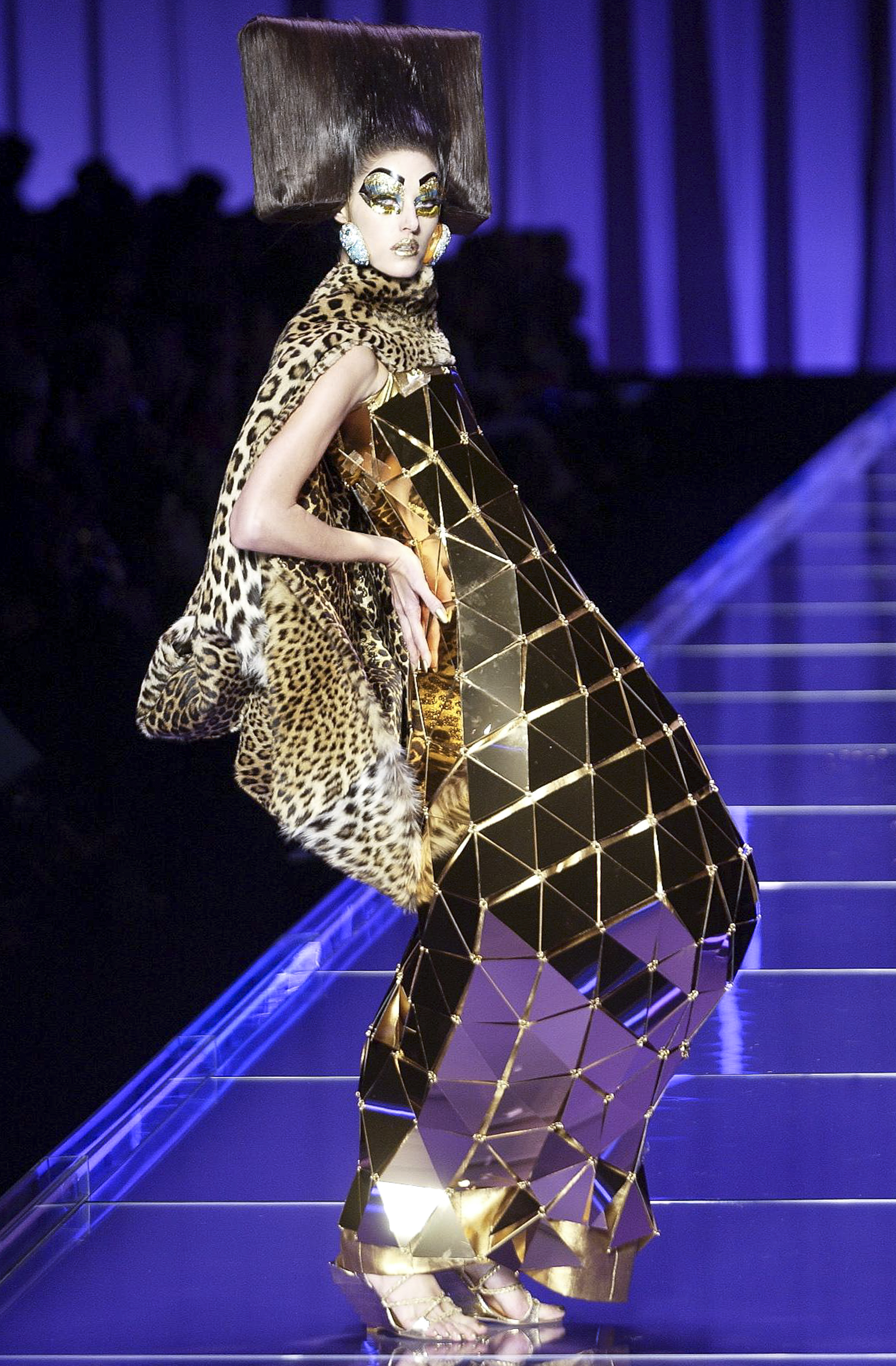
After an aerial tour of Cairo and Luxor, Dior creative director John Galliano turned his fascination with ancient Egypt into a decadent, luxe fashion show for the ages. The show featured organza peplum skirts, gold reptilian leathers, and an abundance of lapis and gold lamé fabric. Supermodel Erin O’Connor opened the show dressed as Cleopatra, complete with a Nefertiti hat and sphinx eye makeup. This show embodied Galliano's showman side. And while its wearability is up for debate, you can't deny that this show is a visual spectacle.
Versace Ready-to-Wear Fall/Winter (1992)
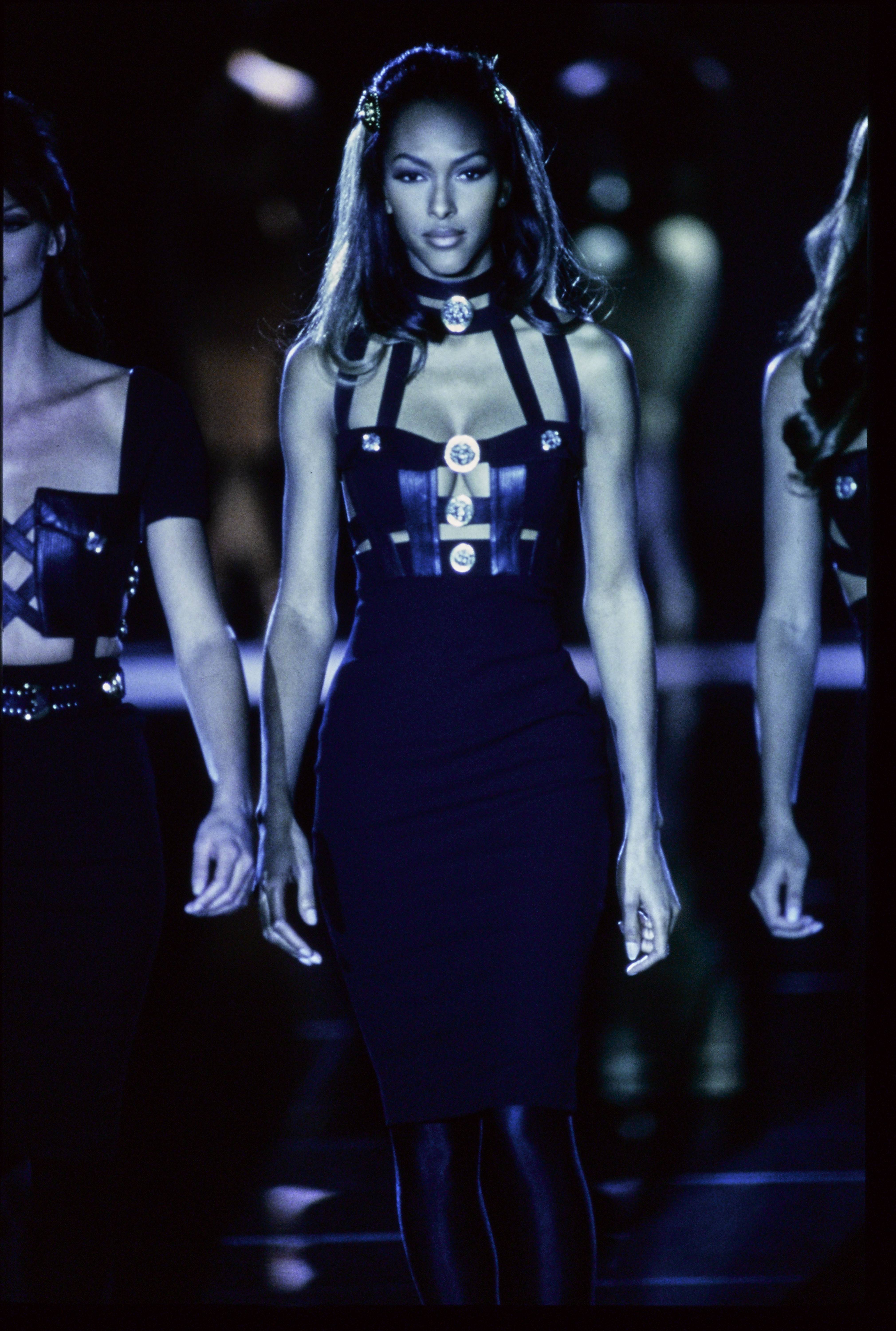
Versace's Fall 1992 RTW show was pure drama. With a runway that rewrote sensuality rules, Versace supermodel mainstays like Naomi Campbell and Cindy Crawford strutted in skin-baring dresses that left little to the imagination. They showed off the female form in ways that were as provocative as they were empowering for the early 1990s. This was the show where Gianni Versace’s vision for the house came alive and is still held close to the vest today.
Mugler Ready to Wear Fall/Winter (2024)

Mugler has always been known for their approach to futuristic concepts in design and over-the-top, dramatic runway shows. This collection was no exception and took futuristic fashion to a new level, blending high-tech design with high-octane glam. From sculptural metallic bodysuits to dramatic silhouettes that seemed to defy gravity, this runway was an electrifying homage to the brand's history of dramatic flair (Thierry Mugler once had an hour-long, 300-piece fashion show). Casey Cadwallader embraced a futuristic vision of beauty and strength while taking inspiration from archival pieces—it was a statement about what the future of fashion could hold.
Comme des Garçons "Bumps" Spring (1997)

When you see a Comme des Garçons runway show, you know you're in for something you've never seen before—and Rei Kawakubo’s Spring 1997 collection was nothing short of radical. Nicknamed the "Bumps" collection, this show was a triumph of avant-garde design, with models wearing voluminous garments that literally "bumped" out in odd, angular shapes, like hunchbacks or ultra-wide hips. Fashion fans didn’t know what to make of it, but the shock and awe that the collection inspired proved Kawakubo’s genius at making art out of the absurd...and that kind of seems like the point.
Issey Miyake Ready-to-Wear Spring/Summer (1996)

Issey Miyake’s Spring/Summer 1996 collection predicted Y2k culture with an abstract, colorful runway show that showed fashion as a form of visual art. Models walked the runway in Dr. Seuss-ian striped bodysuits and swimsuits on a multicolored painted stage. This may not be the definitive Miyake runway show, but it's one of his most fun and interesting, full of pieces that moved with the body yet seemed to exist outside the confines of traditional fashion design.
Chanel Couture Spring/Summer (1983)
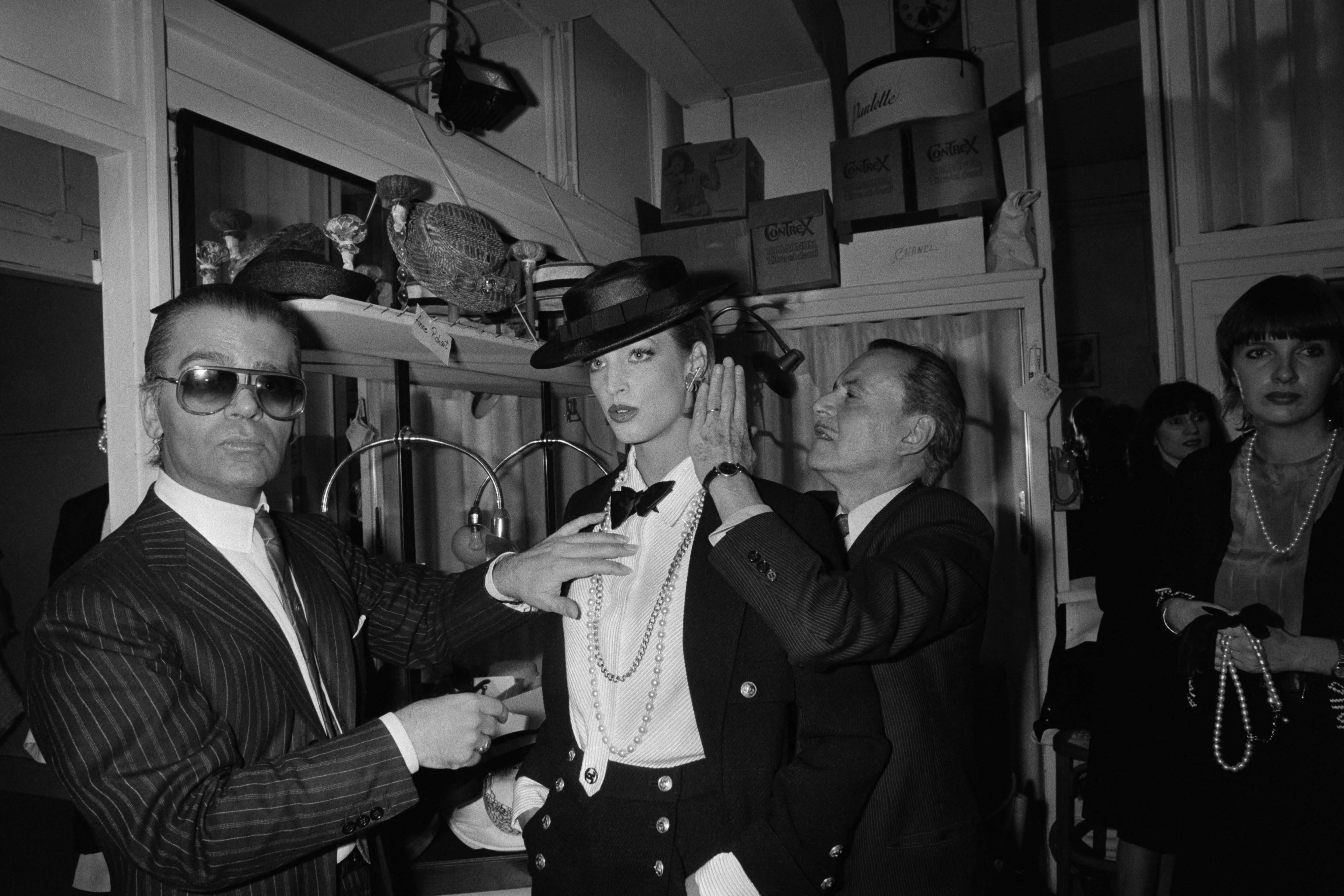
Karl Lagerfeld’s Spring/Summer 1983 show for Chanel felt like a breath of fresh air for the brand. Before he took over as creative director, the brand was seen as close to its end. With an airy, light touch, Lagerfeld introduced a softer, more fluid take on the iconic Chanel suit, using softer tweeds and pastel hues to contrast with the hyper-feminine, structured glamour of the 1980s. This show was all about redefining classic Chanel style—effortlessly chic with a twist of modernity.
Christian Dior Haute Couture Spring (1997)

John Galliano’s 1997 Spring Haute Couture debut collection for Dior was the epitome of French opulence and fashion and a groundbreaking moment for the brand. The whimsical and dramatic collection, full of pastel hues, combined Galliano’s unique blend of historical references and avant-garde flair. It cleared the way for Dior under Galliano, cementing his stance as one of fashion’s most innovative designers.
Christian Dior Womenswear Spring/Summer (2017)

Maria Grazia Chiuri’s debut show as Dior's first female creative director was groundbreaking in more ways than one. With her now-iconic “We Should All Be Feminists” T-shirt, a quote from Nigerian author Chimamanda Ngozi Adichie, Chiuri took the reins of a brand traditionally known for its ultra-feminine, romantic vision and turned it into a statement of strength and empowerment. The runway was filled with feminist anthems, oversized blazers, and power skirts, making it an actual moment in fashion history, and she repeated this message in further shows.
Versace Fall Ready to Wear (1991)

Versace’s Fall 1991 Ready-to-Wear collection was a true ode to ‘90s glam and a cultural touchstone. In his boldest collection yet, Gianni Versace introduced the world to the supermodel era. Models like Cindy Crawford, Claudia Schiffer, and Naomi Campbell strutted the runway to George Michael’s song "Freedom" in tight-fitting dresses, metallics, and bold prints. The show marked when Versace became synonymous with bold, unapologetic sex appeal. Sex and power were in the air—and everyone noticed.
Paco Rabanne "Twelve Unwearable Dresses" (1966)

Why anyone would want to wear a dress labeled "unwearable" is beyond my comprehension, but in the mid-’60s, Paco Rabanne’s metal dresses were nothing short of revolutionary. Rabanne first presented the collection, Twelve Experimental Dresses, in 1964,. It was followed in 1966 with a couture collection called Twelve Unwearable Dresses. Constructed from linked metal plates and joined with metal rings, these dresses were literally as hard and indestructible as they were avant-garde. Rabanne’s ingenuity in using unconventional materials to challenge the soft femininity of the time also pays homage to chain mail and other historical events, making these dresses an iconic symbol of the Space Age era.
Bottega Veneta Fall/Winter (2021)

Part of being a Bottega Veneta fan is understanding that it embodies the phrase "money talks, wealth whispers." Daniel Lee’s collection embraced minimalism as a masterclass in quiet luxury, with lush leather, oversized silhouettes, and rich textures that made a statement without shouting. But it wasn’t just the clothes that made waves—it was Lee’s deliberate decision to leave social media behind and present a show that was focused solely on the clothes, giving the brand an air of exclusivity and mystery. The fashion world took note, and the brand left Instagram a year later.
Jacquemus "L'Amour", Spring-Summer (2021)

Sometimes, you just want to walk through a lavender field in couture. Jacquemus’ “L'Amour” Spring/Summer 2021 collection took a post-pandemic show and presented a love letter to summer, sunshine, and fashion. With his signature minimalist aesthetic, Simon Porte Jacquemus delivered an idyllic vision of French chic—think oversized straw hats and silk micro dresses. The show, held outdoors with models moseying across a sun-soaked lavender field, was an escape from the boredom of being locked inside during COVID and a reminder that fashion can still bring joy and lightness in uncertain times.
Schiaparelli Haute Couture Spring/Summer (2023)

The Schiaparelli Haute Couture Spring/Summer 2023 show was one of the most audacious collections in recent memory—and nothing like the Schiaparelli of the 1950s and 1960s. Creative director Daniel Rosenberry pushed the boundaries between fashion and art with couture creations that included a dress adorned with a literal sculpted lion’s head and surrealist makeup that mirrored famous paintings. It was classic Schiaparelli surrealism reimagined for the modern age—bold, bizarre, and utterly breathtaking.
Miu Miu Ready To Wear Spring (1996)

We're not saying Clueless was the definitive inspiration, but Cher Horowitz helped this Miu Miu collection run. With its mix of schoolgirl innocence and provocative allure, the show tapped into the moment's zeitgeist. Think mini skirts, cropped jackets, and thigh-high stockings that felt youthful and cool. The show introduced Miu Miu as Prada's official sister brand—one that wasn’t afraid to mix innocence with subversion, and featured models like Kate Moss and newcomer Chloë Sevigny, straight from her film debut in Kids.
Thierry Mugler “Les Insectes” Spring/Summer (1997)

Thierry Mugler’s Spring/Summer 1997 show was a true theatrical masterpiece dedicated to...bugs. With its hyper-feminine, cyberpunk-inspired designs, the collection transformed the runway into a futuristic fantasy and is considered Mugler's definitive collection. From exaggerated shoulders and dresses made from rubber and leather to waist-cinching corsets, this show explored power, transformation, and the power of fantasy in fashion. Mugler would follow the collection with the iconic “La Chimère” gown, widely considered Mugler’s finest creation and one of the most expensive couture creations ever.
BALMAIN X H&M Collection (2015)

Time and time again, the collaborations between luxury and consumer brands hit. In 2015, the collaboration between Balmain and H&M made waves. Olivier Rousteing’s sleek, instantly recognizable embellished designs—think gold accents and body-hugging silhouettes—were a massive hit, and the collection sold out in a flash. It was a cultural moment, blending high-end luxury with fast fashion and a star-studded runway show with music from the Backstreet Boys, proving that luxury could be democratized without losing its sparkle.
Fendi Roma 90 Years Anniversary (2016)

Any brand turning 90 is a big deal, so naturally a luxury fashion house will go huge for an occasion like that. For Fendi’s 90th anniversary, they threw a celebratory bash with a clear plexiglass runway stretched across Rome's iconic Trevi Fountain and models appearing to walk on water. It was the first-ever fashion show to take place at the Italian landmark. The collection was a breathtaking fusion of Fendi’s heritage and forward-thinking design, with bold new takes on the brand's signature fur, leather, and monogram motifs.
Chanel Ready-To Wear Autumn/Winter (2014/2015)

From the moment the iconic Chanel runway transformed the Grand Palais in Paris into a giant, oversized supermarket, the fashion world knew it was in for a ride. Karl Lagerfeld, never one to shy away from a bit of whimsy, turned grocery shopping into high fashion. Models worked their way past shelves stocked with Chanel-branded daily products like pasta, detergents, and a shopping cart, proving that even the most monotonous of tasks can be elevated to couture. Who knew bananas could look so chic?
Rihanna's Savage X Fenty Show Vol. 2 (2020)
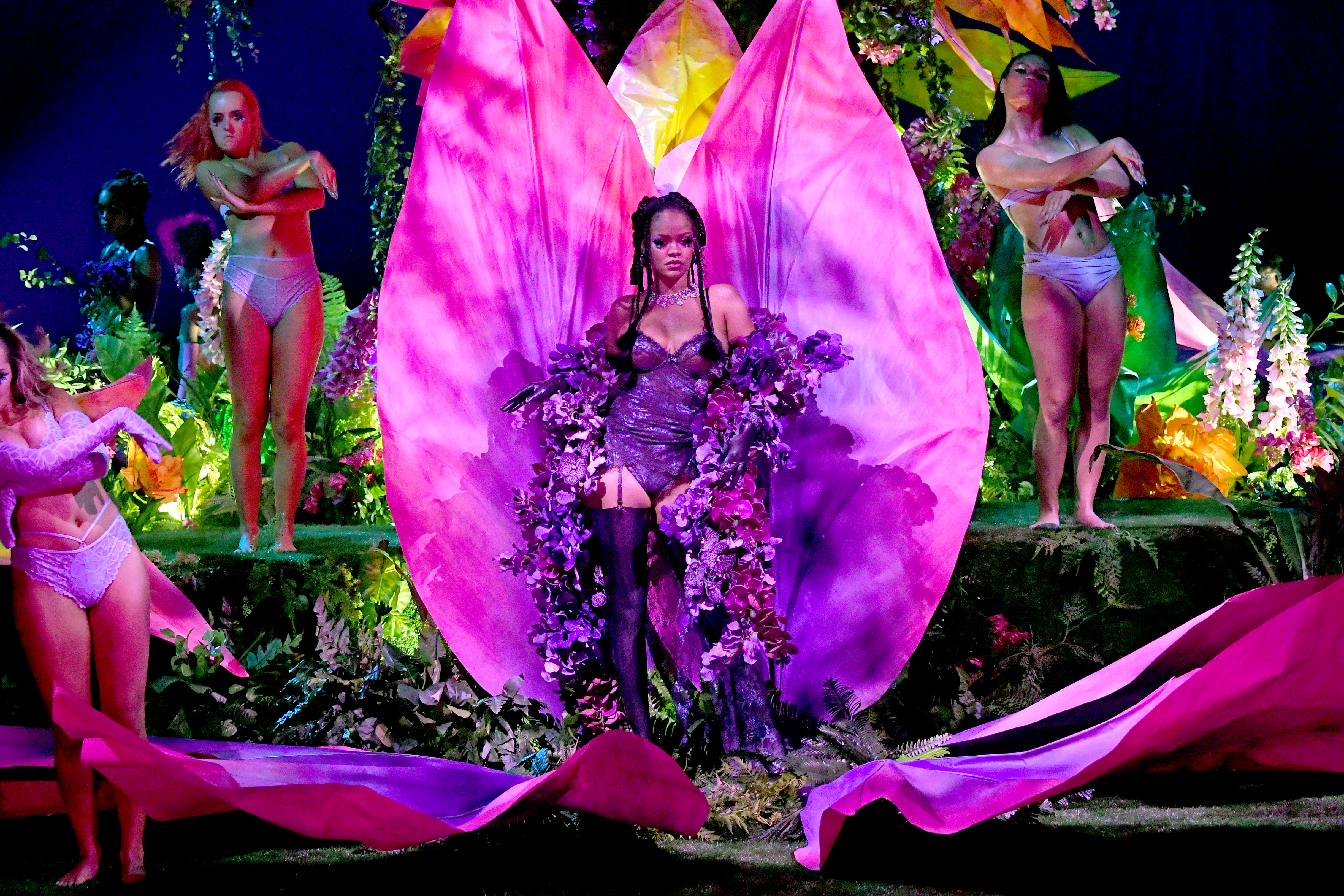
Rihanna’s Savage X Fenty runway shows are known to celebrate inclusivity, empowerment, and bold style, and Vol. 2 in 2020 was no different. With a diverse cast of models, including Bella Hadid, Normani, Paloma Elsesser, and Demi Moore, and performers such as Travis Scott, Miguel, and Rosalía, the show broke conventional beauty standards and showcased lingerie that embraced all shapes, sizes, and identities. Longtime Rihanna choreographer Parris Goebel brought the entire show together.
Off-White's Spaceship Earth: An "Imaginary Experience" Womenswear Fall/Winter (2022)

In a moment that marked the end of an era, longtime model Debra Shaw closed Virgil Abloh’s final show for Off-White’s Fall/Winter 2022-2023 collection. Set against the backdrop of Paris Fashion Week, the show was an emotional and powerful tribute to Abloh’s legacy in the fashion world. In addition to Shaw, the star-studded runway featured Cindy Crawford and her daughter Kaia Gerber, Naomi Campbell, sisters Gigi and Bella Hadid, and Abloh’s muse Serena Williams.
The Battle of Versailles (1973)

The Battle of Versailles in 1973 wasn’t just a fashion show, but a cultural event cementing American fashion’s place on the global stage. Created by Eleanor Lambert and Versailles curator Gerald Van der Kemp, the show featured many names you'll recognize. The show pitted five French designers, Yves Saint Laurent, Pierre Cardin, Emanuel Ungaro, Marc Bohan, and Hubert de Givenchy, against five American designers: Oscar de la Renta, Stephen Burrows, Halston, Bill Blass, and Anne Klein, who brought along her assistant, Donna Karan, in a runway competition within the Palace of Versailles to raise money for its restoration. Guests in attendance for the show included notable names like Princess Grace, Andy Warhol, Liza Minnelli, and Joséphine Baker. The American team took the victory and stunned the fashion world with innovative designs, giving American designers legitimacy on an international level.
Vivienne Westwood’s “Pirates” (1981)

In 1981, Vivienne Westwood’s “Pirates” collection revolutionized fashion with its daring fusion of historical and punk influences. Set in London's The Worlds End Boutique—which kind of looks like a shipwreck—Westwood produced a collection full of draped fabrics, boots, and pirate-inspired silhouettes. Models wore eye patches and hooks for hands. The big, oversized cuts that Westwood would become famous for emerged here first, changing the London fashion scene.
McQueen’s “Plato’s Atlantis” (Spring/Summer 2010)

You'd be hard-pressed to find a fashion show with more impact than "Plato's Atlantis." This unforgettable mix of futuristic design and primal beauty felt like the runway of the next millennium. Prints that felt like they came from UFOs and sculptural silhouettes spoke to McQueen's boundary-pushing creativity. The show also introduced the now-iconic, nearly impossible-to-walk-in, sky-high Armadillo boots, which Lady Gaga made famous through her relationship with the brand. Speaking of the future: Gaga tweeted a live stream to the runway show (a novel technology in 2010), revealing that her upcoming single, "Bad Romance," would be used as part of the soundtrack to the show. The live stream crashed within five minutes.
Amanda Mitchell is a writer and podcaster with bylines at Marie Claire, OprahMag, Allure, Byrdie, Stylecaster, Bon Appetit, and more. Her work exists at the apex of beauty, pop culture, and absurdity. A human Funfetti cake, she watches too much television, and her favorite season is awards season. You can read more of her work at amandaelizabethmitchell.com or follow her on Instagram and Twitter @lochnessmanda.
